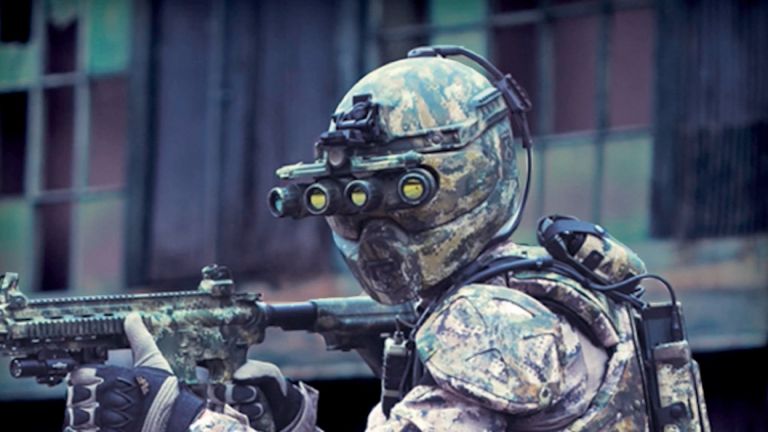
The first robot to walk the earth—in Greek myth from the time of Homer—was a bronze giant called Talos, forged by Hephaestus, the blacksmith god of technology. In fact, the word automaton, “self-moving,” was first used by Homer (750-650 BC) to describe the many animated devices fabricated by Hephaestus.
The bronze android Talos was charged with defending the kingdom of Minos of Crete. The Talos tradition is very ancient, first put in writing by the poets Hesiod (ca 700 BC) and Simonides (ca 525 BC). Talos was depicted on coins of Crete; he was featured in Athenian plays; and appeared in paintings on walls and vases of the fifth century BC. His most memorable appearance was in the ancient epic poem recounting the adventures of Jason and the Argonauts. In the Argonautica myth, the clever sorceress Medea helped Jason win the Golden Fleece and without her techno-wizardry on Crete, the Argonauts would have been the next victims of the huge bronze automaton.
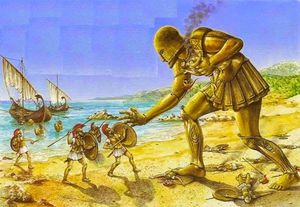
The mythic narratives provide enough details about Talos’s abilities, inner workings, and power source to fit the modern definition of an android robot. To guard Crete against invaders, Talos marched around the large island three times a day. “Programmed” to spot approaching ships, Talos picked up and hurled boulders to sink vessels. In close combat, Talos could heat his metal body red-hot and hug victims to his chest, roasting them alive. Poets told how Talos “killed many men in his burning embrace” and some ancient bronze mirrors show Talos crushing antagonists.
The myth describes Talos as “made, not born,” underscoring the idea that he was imagined as a product of technology, rather than simply inert matter brought to life by magic or divine command. Hephestus constructed Talos with a single internal artery or tube that went from his head to his feet. Pulsating in this artery was ichor, the mystical life-force of the gods. This entire “vivisystem” was sealed by a bronze bolt on the automaton’s ankle.
In the myth, Jason and the Argonauts were homeward bound, seeking a safe harbor. They anchored the Argo in a bay sheltered by high cliffs on Crete. Talos spotted them and began heaving boulders at the ship. The terrified sailors cowered on the beach. How would the Argonauts escape the clutches of the killer robot?
Medea to the rescue! Because she understood the internal power system of Talos, Medea realized that the robot’s ankle is his vulnerable point. She reasoned that if she could cause all of his ichor to bleed out, the automaton would be demolished. Futhermore, guessing that the lifelike automaton might possess some human-like desires, Medea used persuasion to play on his “emotions.” She promised Talos that she could make him immortal, but only if he allowed her to remove the bolt. Talos agreed.
When the essential seal on his ankle was dislodged, the ichor flowed “out like molten lead.” His life force ebbs away and the mighty bronze giant topples onto the beach.
In the fifth century BC, vase paintings depicted Medea and Jason using tools to remove the bolt, confirming Talos’s technological origins. Even more surprising, the vase painters humanized Talos, portraying him as half-machine, half-human—a kind of cyborg. Talos reels off balance, as Jason kneels to unseal the bolt. These images evoke empathy—and one artist even painted a teardrop on the bronze cheek of the dying Talos.
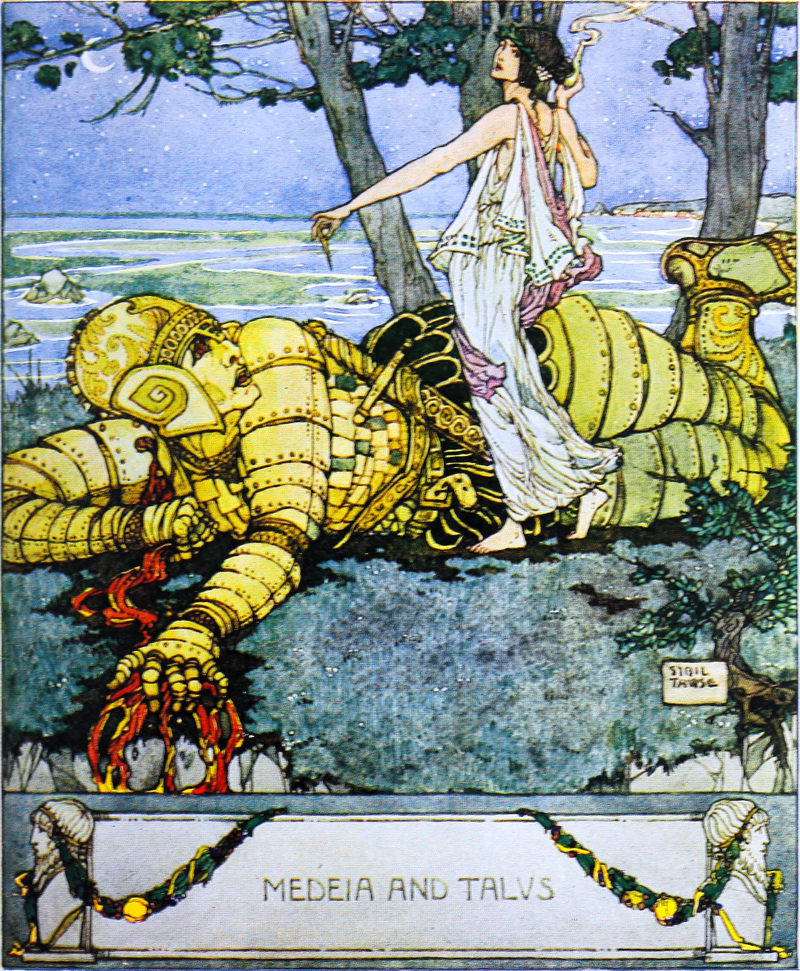
As one of the first-ever science fiction stories, the Talos tale is remarkable on many levels. It shows that long before technology made real automatons possible, the idea of a robot was thinkable. More than 2,500 years ago, people imagined the brilliant engineer god Hephaestus making an animated man of bronze, with an internal power source and encoded instructions to carry out complex activities: Talos would recognize trespassers, hurl rocks, and crush and burn enemies. Another amazing feature of the myth portrays the witch Medea, who figures out the robot’s weak spots and exploits flaws in its machine-human nature.
The imaginary bronze robot raises a flurry of fascinating questions still pondered today. Was Talos a mindless machine? Did he possess consciousness, desires, and agency? The myth was an early exploration of the notion that a metallic automaton might have human-like feelings. In his encounter with Medea, Talos was swayed by suggestion, revealing his human-machine hybrid nature. This uncanny “in-betweenness” is a hallmark of automatons today.
The myth also foreshadows dilemmas about practical and ethical issues of Artificial Intelligence and robotics today. A security system that dispatches an android like Talos, created by advanced technology to automatically perform preordained duties triggered by specific situations—that may seem like a good idea. But what if the situation suddenly shifts or it becomes necessary to interrupt the automatic response? How can one incapacitate a powerful machine once set on track? What if, like Talos, an AI robot unexpectedly develops the ability to make its own decisions? What if a hacker—like Medea—exploits the automaton’s vulnerable points or flaws? It is worth remembering that Talos was created by sublime technology, and it was technology that ultimately destroyed him.
Thousands of years before the Hollywood film RoboCop (1987) about a cyborg police force and the bionic assassins and bodyguards in the Terminator films (1984-2015) and other science fictions about cyborgs capable of deploying lethal force, the ancient Greeks could envision robotic guardians created by super-technology. Talos, like modern ideas of cyborgs, and like other ancient automata made by divine craft, was imagined as a hybrid of living and non-living parts. With myths like that of Talos, ancients could contemplate whether an entity “made, not born” would simply be a mindless machine or could become an autonomous, sentient intelligence. The Talos myth foreshadows themes in science fiction, from Mary Shelley’s Frankenstein (1818) to Blade Runner (1982, 2017), Her (2013), Ex Machina (2014) and other films.
Talos continues to have a robust afterlife in popular culture and science. In 2017, for example, an article in Popular Mechanics compared the blue-tinted “synthetic magneto hydrodynamic conductant” that bleeds from wounded the humanoid robots in the sci-fi TV series HUMANS to Talos’s life fluid ichor. Talos’s internal “mechanics” and power source have long fascinated scientific technologists. Some have likened the solitary conduit carrying the mysterious force that animated Talos to an alternating electrical current. Bronze, being mostly copper, does have high electrical conductivity, but this fact was unknown in antiquity (although they would have noticed that monumental bronze statues, such as the bronze-clad Colossus of Rhodes, constructed in 280 BC, mysteriously attracted lightning). Might the ancient image of Talos’s solitary artery or conduit pulsating with ichor reflect something akin to what cognitive scientists call the “intuitive theories” of children and adults about physics and biology? Even people who know that an electrical circuit requires two wires, the mental picture persists of “juice” flowing through a single cable. Our “pre-scientific” intuitive vision coexists with modern scientific knowledge.
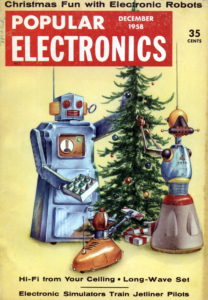 Back in 1958, Popular Electronics published a brief history of robots by William Tenn. Remarking on Talos’s single vessel “running from his neck to his ankle, stoppered . . . in his foot by a large bronze pin,” Tenn mused that the arrangement brings to mind a “main power cable” and “a fuse.” Writing at the height of the Cold War, Tenn marveled that Talos was an ancient “Weapons Alert System and Guided Missile in one package!”[i]
Back in 1958, Popular Electronics published a brief history of robots by William Tenn. Remarking on Talos’s single vessel “running from his neck to his ankle, stoppered . . . in his foot by a large bronze pin,” Tenn mused that the arrangement brings to mind a “main power cable” and “a fuse.” Writing at the height of the Cold War, Tenn marveled that Talos was an ancient “Weapons Alert System and Guided Missile in one package!”[i]
Indeed, the same year as Tenn’s article, 1958, the first surface-to-air guided missile system became operational. When development had begun in 1947, the military planners remembered the Greek myth and Talos’s role as an automated adjunct of the superior Minoan navy, and the decided to name the new US naval weapon system “Talos.”
Talos was approved as the name for the new ramjet missile in 1948. In 1958, the Talos guided missiles began patrolling the seas mounted on large naval carriers, poised to launch warheads at enemies. Harking back to the duties of the mythical bronze robot on Crete, the Talos missiles functioned as a frontline defense, with a range of 200 miles and a speed of Mach 2.5 –almost 2,000 mph, twelve times the estimated speed of bronze Talos. Like Talos ceaselessly circling his territory, spotting and tracking invaders, and then lobbing rocks to destroy foes, the Talos defense system was automatically directed but it was partly autonomous at closer range. The Talos guided missiles “rode” a radar beam most of the way to the vicinity of the target but then homed in on the target “semi-actively.”
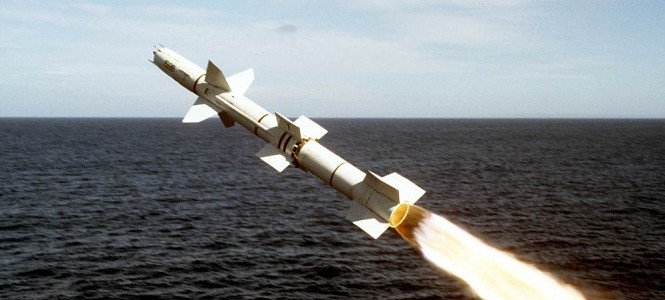
Modern military fascination with the myth of the great bronze robot continued. In 2013, inspired by the myth of the invincible warrior made of the strongest materials and most advanced technology, the US Special Operations Command (SOCOM) and Defense Advanced Research Projects Agency (DARPA) initiated a project to create a futuristic, robotic exoskeleton suit of armor for special operations soldiers, something akin to the weaponized suit worn by the superhero in the film Iron Man (2008). The idea for the high-tech armored outfit arose from a commander’s desire to protect his men in unconventional battle situations in Afghanistan and Iraq. With the Greek myth of Talos in mind, SOCOM deliberately devised the name Tactical Assault Light Operator Suit in order to render the acronym TALOS (see featured image). Plans for the full-body, form-fitting powered armor, intended to provide superhuman strength, hyper-sensory awareness, and ballistic protection, include embedded computers, biosensors, enhanced vision and audio capabilities, solar panels, and features that capture kinetic energy. The design also calls for an electronically activated “liquid body armor” system developed by MIT, which cannot help but recall the ichor of the immortal gods. As of this writing in 2019, TALOS is still being developed.
More than 2,500 years ago, the story of Talos set in motion ancient versions of the knotty questions about how to control automatons, presaging issues that surround oncoming advances in robot-AI technologies. Talos was a killer robot deployed by King Minos to slay enemies and he would have killed the great Greek heroes Jason and the Argonauts, were it not for Medea’s ability to “hack” into his system. Talos was able to make an unexpected decision that led to his own destruction. Some 400 years ago, in 1596, the poet Edmund Spenser created a Talos-like figure in his famous allegorical poem The Faerie Queene. This was a mechanical android made of iron called Talus, “programmed” to serve justice to villains. Invincible and relentless, the Iron Knight Talus soon became an inflexible killing machine without mercy. Spenser used the idea of the killer robot Talos/Talus as a symbol of an inhumane, unbending form of justice, with no way of taking into account wrongdoers’ attenuating circumstances, their motives or backstories. Can automatons and AI be “programmed” with ethical values (known as “artificial moral agents,” AMAs)? Can automatons develop emotions or agency beyond what was intended by their makers and users?
Questions raised by the myth of Talos have not escaped modern game makers. The Talos Principle, a philosophical narrative puzzle created in 2014, plumbs conundrums of Artificial Intelligence (AI) and aspects of “transhumanism,” the belief that advanced technology will enhance human physiology, psychology, and intelligence. In the game, the single player assumes the role of an AI robot that seems to have human-like consciousness and autonomy. Progressing through a complex world littered with classical Greek ruins and the relics of a lost modern dystopia, the player reacts to obstacles, clues, and choices to solve metaphysical dilemmas, and ultimately faces the question of free will.
The multiplying reflections of Talos since antiquity show that similar conundrums about human and artificial intelligence were foreshadowed in the mythic imagination long before the sweeping advances in technology that make these questions so urgent today.
About the Author
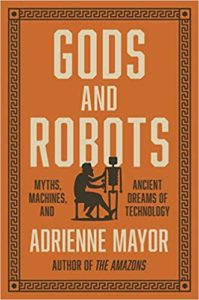 Adrienne Mayor is a folklorist and historian of ancient science who investigates natural knowledge contained in pre-scientific myths and oral traditions. Her research looks at ancient “folk science” precursors, alternatives, and parallels to modern scientific methods. She is Berggruen Fellow at the Center for Advanced Study in the Behavioral Sciences, Stanford, 2018-2019. Mayor’s latest book, Gods and Robots: Myths, Machines, and Ancient Dreams of Technology investigates how the Greeks imagined automatons, replicants, and Artificial Intelligence in myths and later designed self-moving devices and robots. This article is adapted from the first chapter.
Adrienne Mayor is a folklorist and historian of ancient science who investigates natural knowledge contained in pre-scientific myths and oral traditions. Her research looks at ancient “folk science” precursors, alternatives, and parallels to modern scientific methods. She is Berggruen Fellow at the Center for Advanced Study in the Behavioral Sciences, Stanford, 2018-2019. Mayor’s latest book, Gods and Robots: Myths, Machines, and Ancient Dreams of Technology investigates how the Greeks imagined automatons, replicants, and Artificial Intelligence in myths and later designed self-moving devices and robots. This article is adapted from the first chapter.







